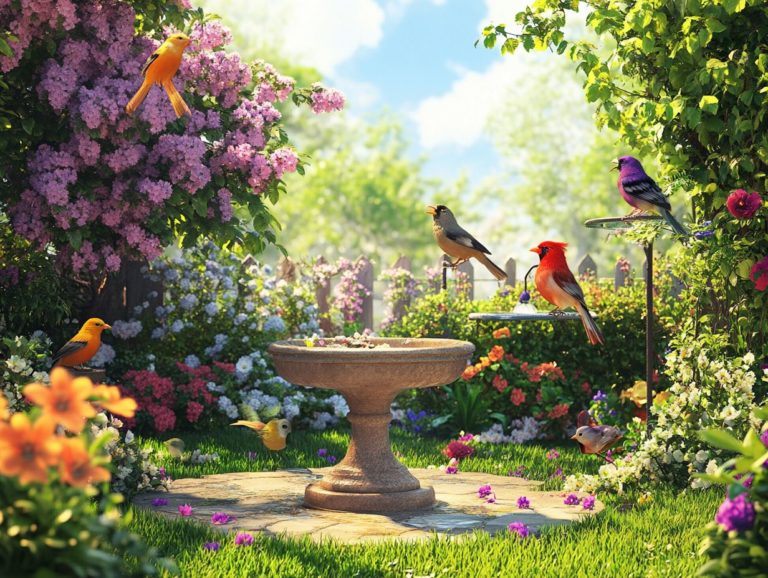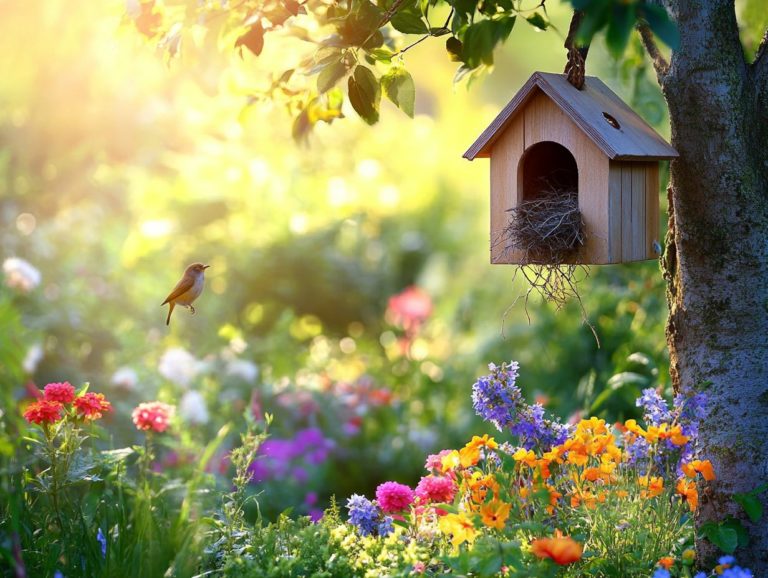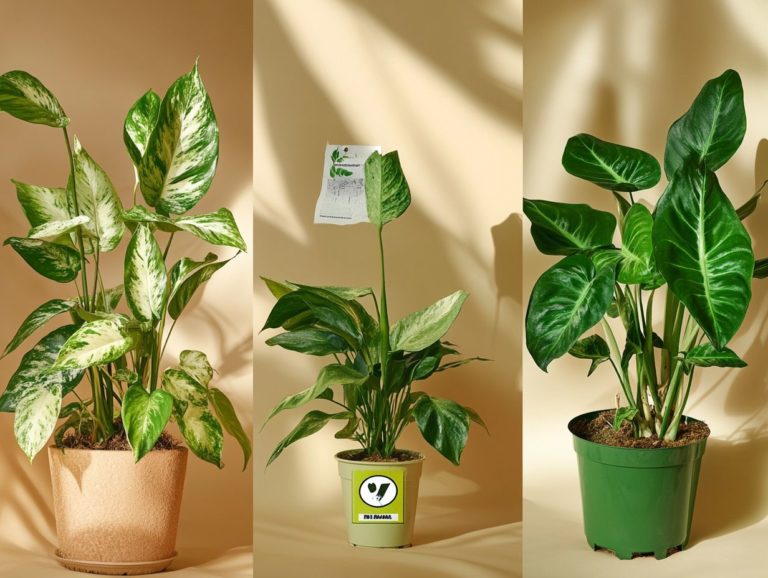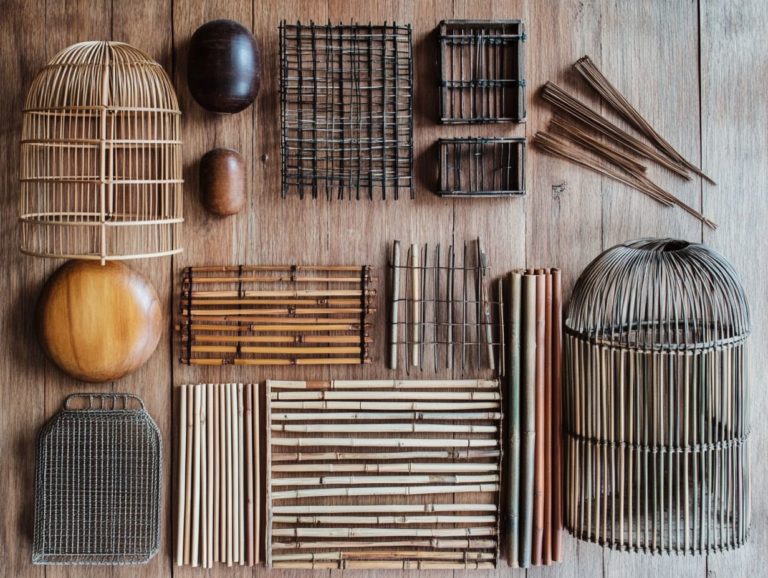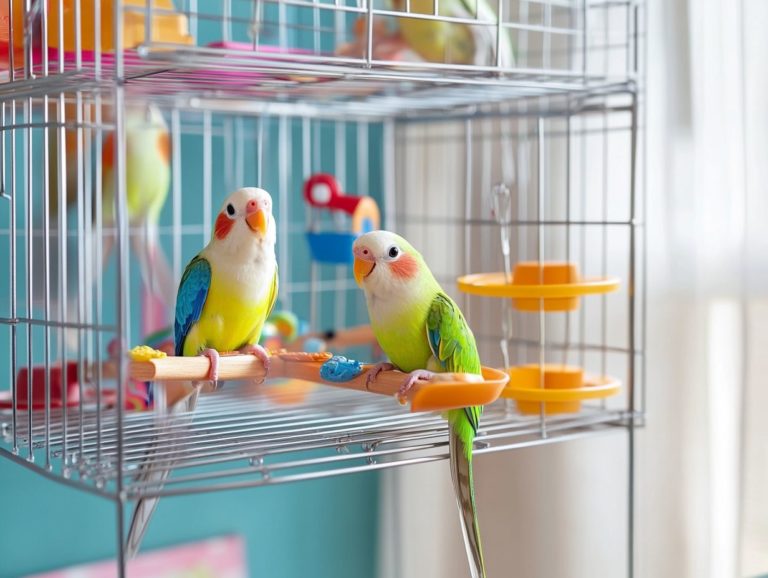How to Create a Bird-Friendly Garden
Creating a bird-friendly garden not only elevates your outdoor space but also plays a vital role in supporting local bird populations.
From selecting native plants to integrating water sources, every detail matters in designing a welcoming habitat. This guide will take you through practical steps to attract and nurture a variety of bird species while ensuring your garden remains sustainable.
Whether you re a seasoned gardener or just starting your journey, you ll discover how to transform your yard into a sanctuary for our feathered friends.
Contents
- Key Takeaways:
- Why Create a Bird-Friendly Garden
- Creating a Bird-Friendly Habitat
- Attracting Birds to Your Garden
- Maintaining Your Bird-Friendly Garden
- Frequently Asked Questions
- What are some key elements to consider when creating a bird-friendly garden?
- How can I attract a variety of bird species to my garden?
- What type of plants should I include in my bird-friendly garden?
- How can I make my garden a safe space for birds?
- Do I need a large space to create a bird-friendly garden?
- Can I still have a beautiful garden while making it bird-friendly?
Key Takeaways:
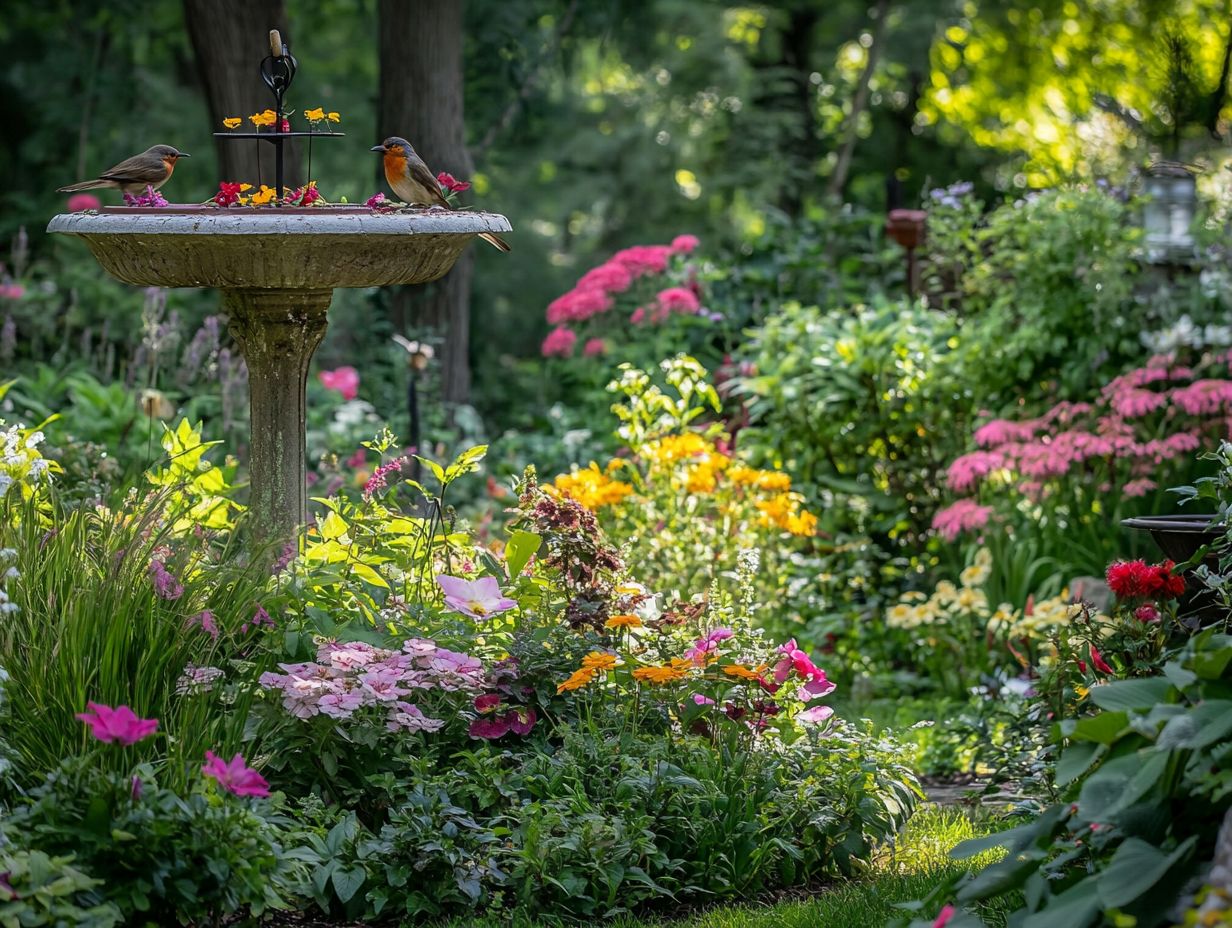
- Supporting local bird populations is vital for a healthy ecosystem.
- Use native plants and provide water sources to attract birds.
- Bird feeders and baths bring joy and entertainment to your family.
Why Create a Bird-Friendly Garden
Creating a bird-friendly garden is essential for supporting local bird populations and enhancing the variety of plants and animals. Additionally, learning how to create a bird-friendly home serves as a critical haven, offering food sources, nesting sites, and shelter for a variety of bird species.
By thoughtfully incorporating elements that cater to birds’ needs like native plants and water features you can revive local habitats and make a difference today!
This effort enriches the ecosystem and connects you with local wildlife.
The Importance of Supporting Local Bird Populations
Supporting local bird populations is essential for maintaining ecological balance and fostering variety in plants and animals, particularly in areas grappling with habitat loss from urbanization and climate change.
Birds play essential roles in various ecological processes, such as pollination and keeping bugs in check. For example, hummingbirds and certain finches are crucial for pollinating a range of plants, aiding not only in plant reproduction but also ensuring food supplies for other creatures. Sparrows and swallows help manage insect populations, benefiting agriculture.
However, notable species like the California Condor and various songbirds face dire threats due to shrinking habitats. Creating bird-friendly spaces and restoring natural environments are vital steps for these populations to not only survive but thrive, ultimately supporting a healthier ecosystem for everyone.
Creating a Bird-Friendly Habitat
Crafting a bird-friendly habitat requires meticulous planning and design that emphasizes the use of native plants, sufficient water sources, and natural shelter. By prioritizing these elements, you can learn how to create a calming environment for birds where they not only survive but truly thrive, whether in urban or suburban settings.
Choosing Native Plants and Trees
Choosing native plants and trees is essential for sustaining local bird communities. These plants provide the right food sources and nesting sites, ultimately supporting variety in plants and animals.
By integrating these species into your gardens and landscaping, you create a thriving ecosystem that benefits avian populations and fosters a rich habitat for beneficial insects like bees and butterflies. Native plants such as elderberry and serviceberry are especially attractive to various bird species, offering vital berries during the fall and winter months.
Incorporating trees like oak and maple can provide shelter and attract insects that are critical for feeding nestlings. If you re looking to enhance your garden with these natural treasures, consider visiting specialized native plant nurseries or local conservation groups for invaluable guidance.
Incorporating Water Sources
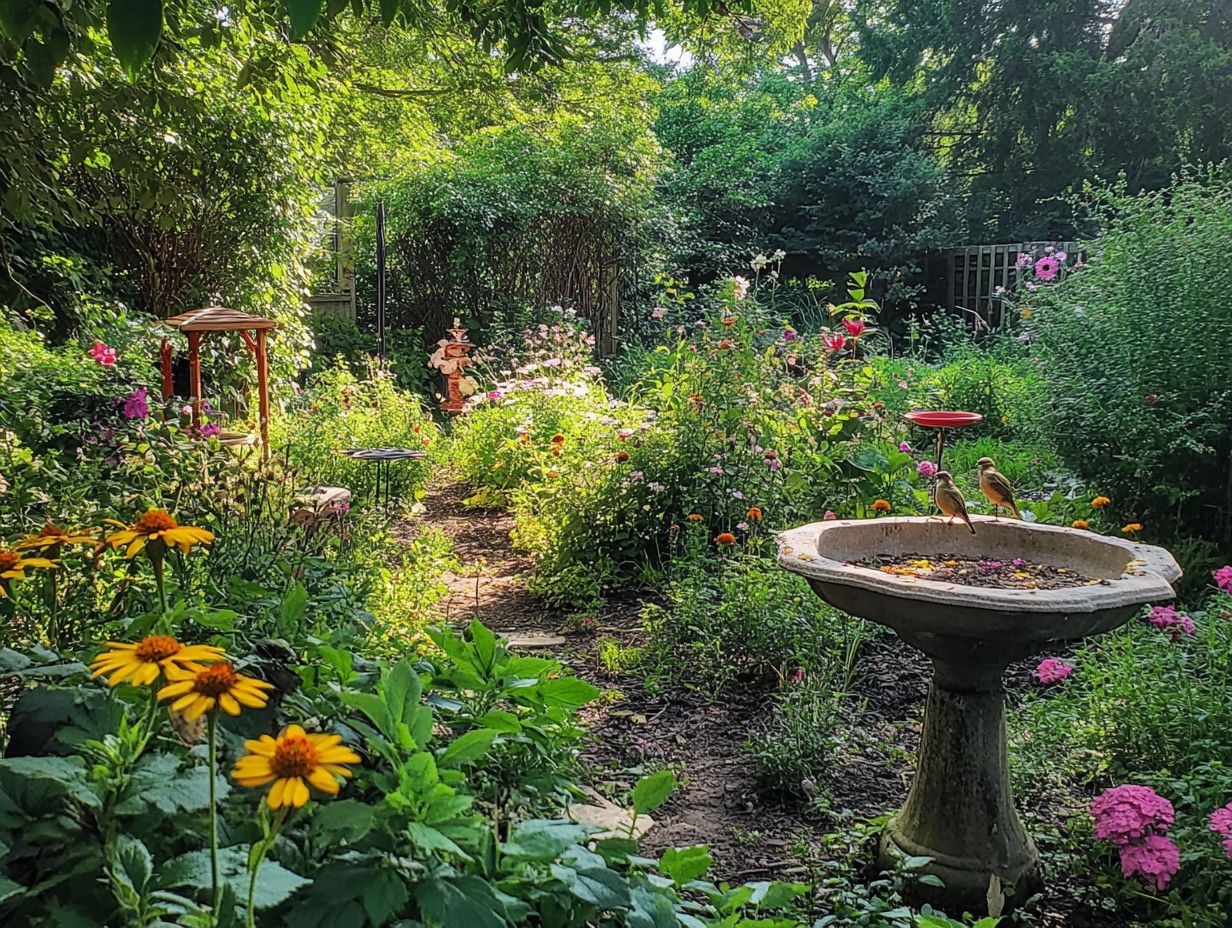
Water sources like bird baths and ponds attract birds to your garden. They provide essential hydration and bathing opportunities.
These features serve as vital drinking spots. They also create a serene atmosphere that attracts various wildlife.
Imagine the soothing sound of a small fountain or waterfall. This keeps the water fresh and aerated, benefiting aquatic life and deterring stagnation.
Design shallow edges in your ponds for easy access to water. Regular cleaning is key: remove debris, replace the water frequently, and manage algae growth.
Using natural filtration methods such as planting aquatic plants can improve the health of these environments. It also makes them attractive to various birds and other creatures.
Providing Shelter and Nesting Areas
Providing shelter and nesting areas helps birds safely raise their young. It also protects them from predators and harsh weather.
Incorporating layers of vegetation is essential. Native shrubs create thick underbrush for secure nesting spots.
Tree canopies offer additional shelter, elevating nests above ground predators. Ground covers provide safe spaces for smaller birds to forage and hide.
Diverse vegetation caters to varying bird species’ preferences. This encourages a wider range of avian visitors to thrive in your garden.
Attracting Birds to Your Garden
Attracting birds to your garden can be mastered with various techniques. Consider strategically placing bird feeders and baths.
These not only provide reliable sources of food and water, but also create an inviting sanctuary for local bird species. Each thoughtful detail enhances your garden’s allure.
This encourages feathered visitors to make it their home.
Using Bird Feeders and Bird Baths
Effective use of bird feeders and baths transforms your garden. It becomes a thriving haven for birds.
Consider setting up various types of feeders tube, platform, and suet. This caters to different birds with unique feeding preferences.
Position feeders at varying heights and close to natural cover like shrubs or trees. This creates an inviting atmosphere.
Be diligent about cleaning feeders regularly. This wards off mold and bacteria, and refresh the water in baths frequently.
Opt for seeds like sunflower hearts and nyjer. These are particularly popular during winter months.
In spring, a mix of seeds and dried fruits can entice even more feathered visitors. Make seasonal adjustments for their changing dietary needs.
Attracting Specific Bird Species
Attracting specific bird species hinges on understanding their unique needs for food and shelter. You can create a welcoming space by using native plants.
Each species has distinct preferences influenced by geographical region and ecological roles. For example, goldfinches love sunflower seeds, making sunflowers a delightful addition to any bird-friendly garden.
Blue jays prefer oaks for acorns and nesting spots. By incorporating diverse native plants, you tailor your landscape to meet their unique requirements.
Hummingbirds, drawn to nectar-rich plants, love bee balm and salvia. Thoughtfully creating specific habitats will attract these captivating avian visitors.
Maintaining Your Bird-Friendly Garden
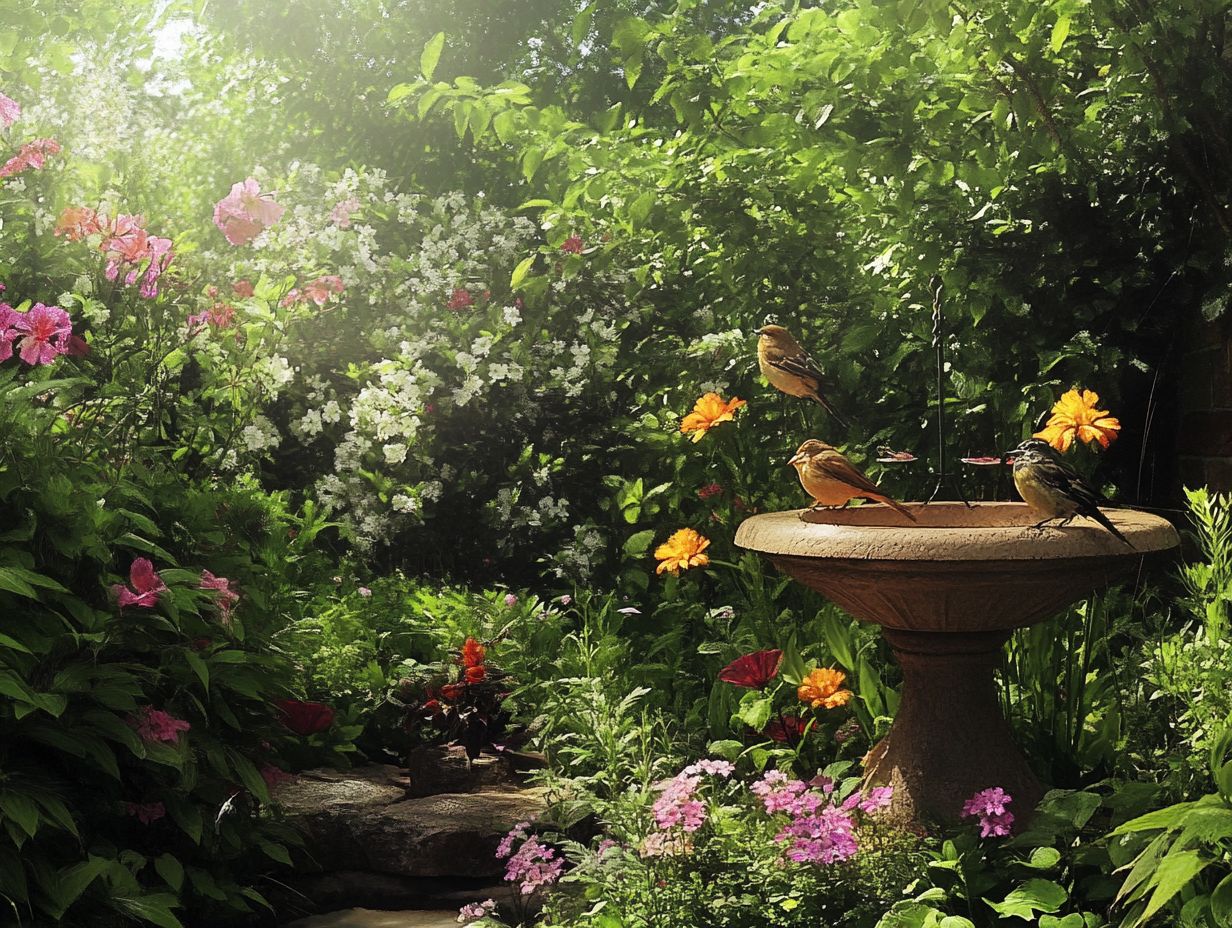
Maintaining your bird-friendly garden is a continuous journey that requires your commitment to sustainable gardening practices.
By utilizing organic compost and ensuring the health of native plants, you actively support local bird populations while promoting conservation efforts. Your garden becomes a sanctuary for birds and a vibrant ecosystem that flourishes under your care.
Practicing Sustainable Gardening Techniques
Practicing sustainable gardening techniques is vital for cultivating a thriving ecosystem that supports biodiversity and enhances habitat restoration in your bird-friendly garden.
Incorporate organic compost to enrich the soil and promote healthy plant growth. This minimizes the need for artificial plant food while protecting local wildlife.
Manage invasive plants by monitoring and removing them diligently. This creates space for native species to thrive, providing essential food and shelter for birds and beneficial insects.
Choosing the right plants matters. Native flora helps create a balanced environment where local fauna can flourish. These fun practices will make your garden beautiful and lively!
Dealing with Common Garden Pests
Dealing with common garden pests in your bird-friendly sanctuary requires a thoughtful approach that embraces organic pest control methods. These methods safeguard beneficial insects and pollinators while minimizing harm to the wildlife you cherish.
Consider utilizing natural predators like ladybugs and lacewings; they re your little allies in keeping harmful populations in check while maintaining the delicate balance of your garden ecosystem.
Introducing companion planting is another clever strategy that can deter specific pests while providing food sources for both birds and beneficial insects.
Techniques such as neem oil applications or diatomaceous earth work wonders, targeting pests without the toxic repercussions of synthetic chemicals. By adopting these organic strategies, you can cultivate a healthier environment where both wildlife and plants flourish in perfect harmony.
Frequently Asked Questions
What are some key elements to consider when creating a bird-friendly garden?
Some key elements include planting native trees and shrubs, providing a water source, creating shelter and nesting areas, and avoiding pesticides and herbicides.
How can I attract a variety of bird species to my garden?
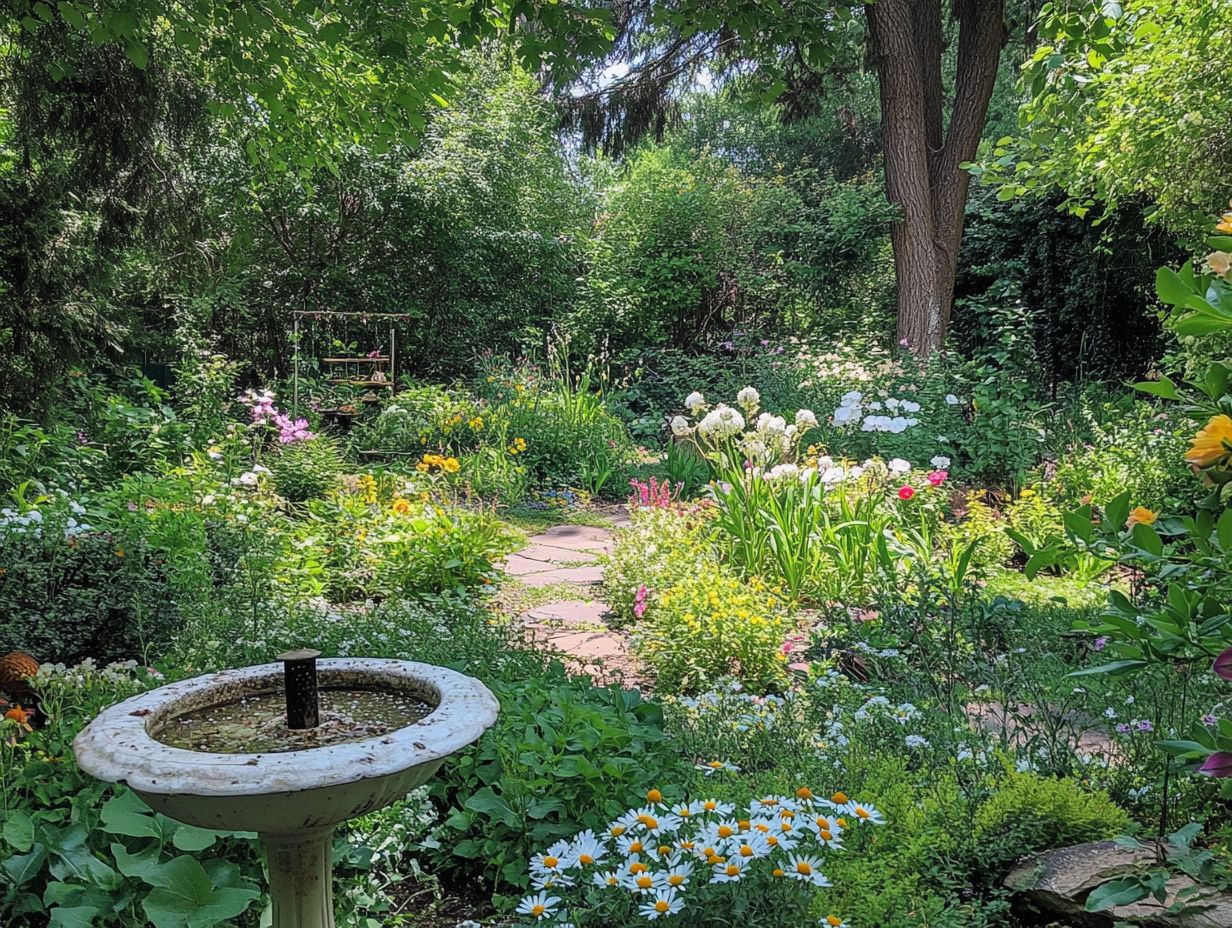
To attract a variety of bird species, include a diverse range of plants and flowers that provide food and shelter for different types of birds. Adding bird feeders and bird baths can also increase the diversity of bird species in your garden.
What type of plants should I include in my bird-friendly garden?
Include native plants, as they provide the best source of food for birds. Choose a mix of trees, shrubs, and flowers that bloom at different times of the year to provide a continuous food source.
How can I make my garden a safe space for birds?
Avoid using pesticides and herbicides, as they can harm birds and other wildlife. Also, make sure to clean bird feeders and baths regularly to prevent the spread of diseases.
Do I need a large space to create a bird-friendly garden?
No, you can create a bird-friendly garden in any size space, from a small balcony to a large backyard. Even just a few well-placed plants can attract a variety of birds to your garden.
Can I still have a beautiful garden while making it bird-friendly?
Yes, you can have a beautiful garden while also making it bird-friendly. Choose a variety of plants with different colors, textures, and heights to create a visually appealing and functional garden for both birds and humans.
Start your bird-friendly garden today and watch the magic unfold!

